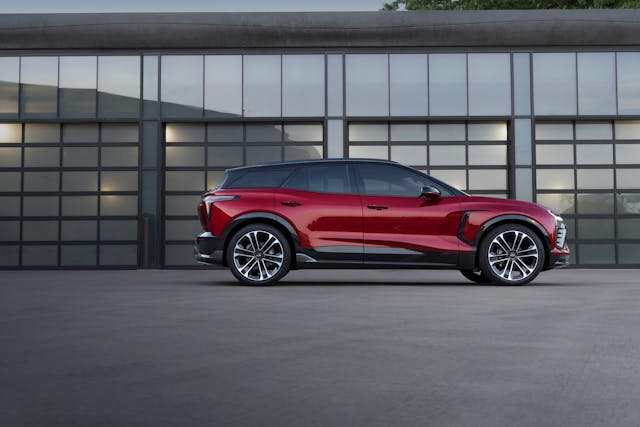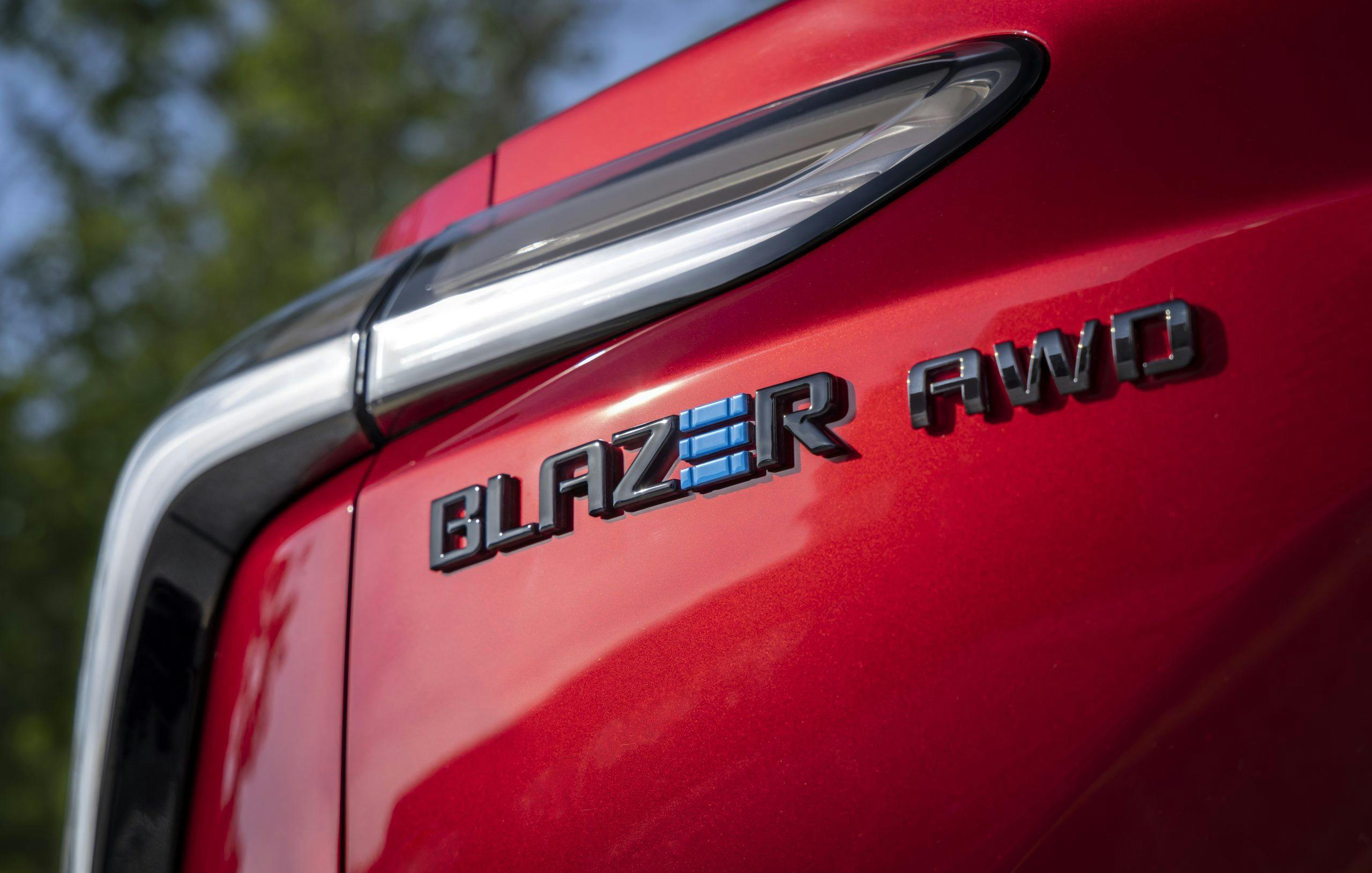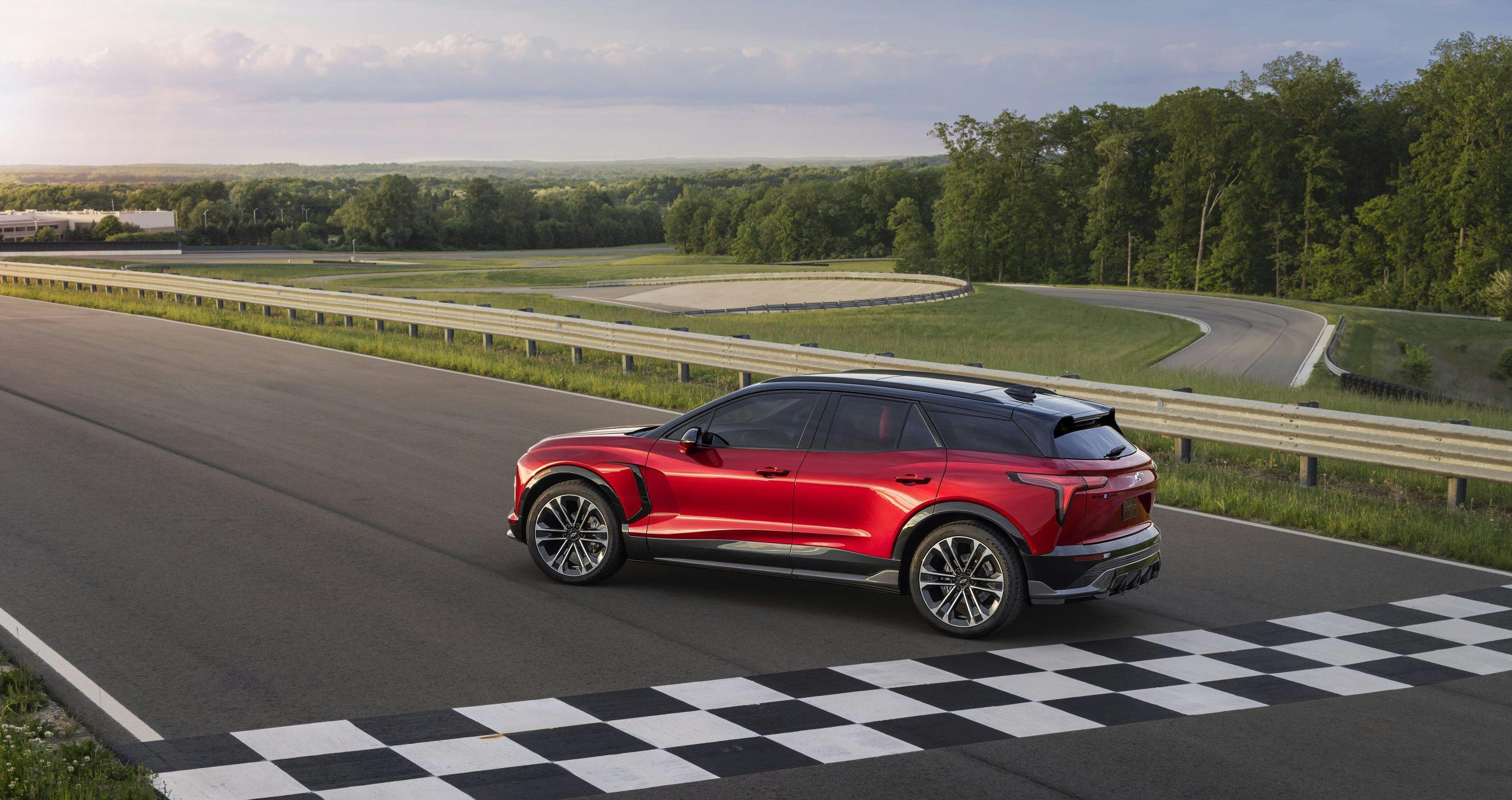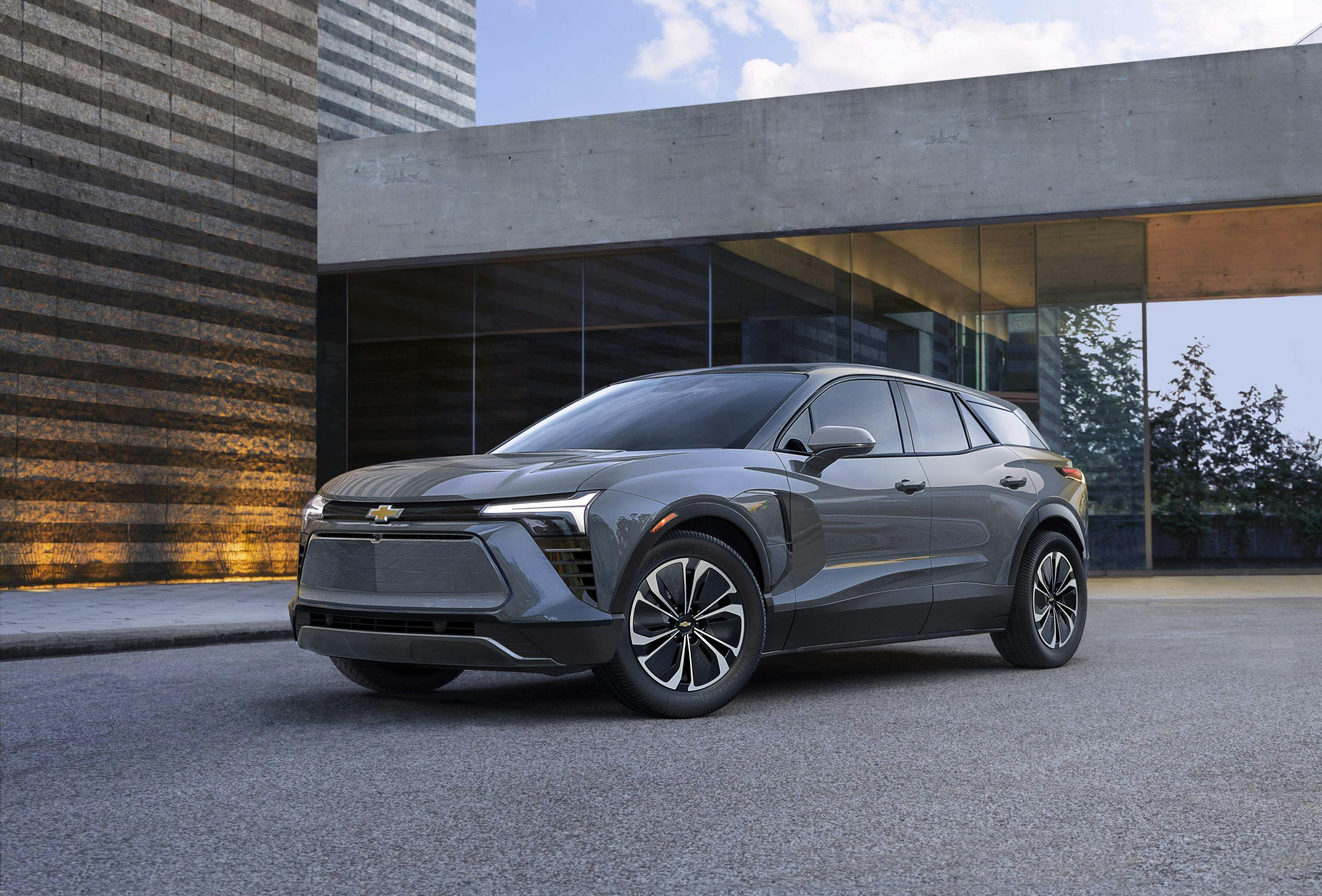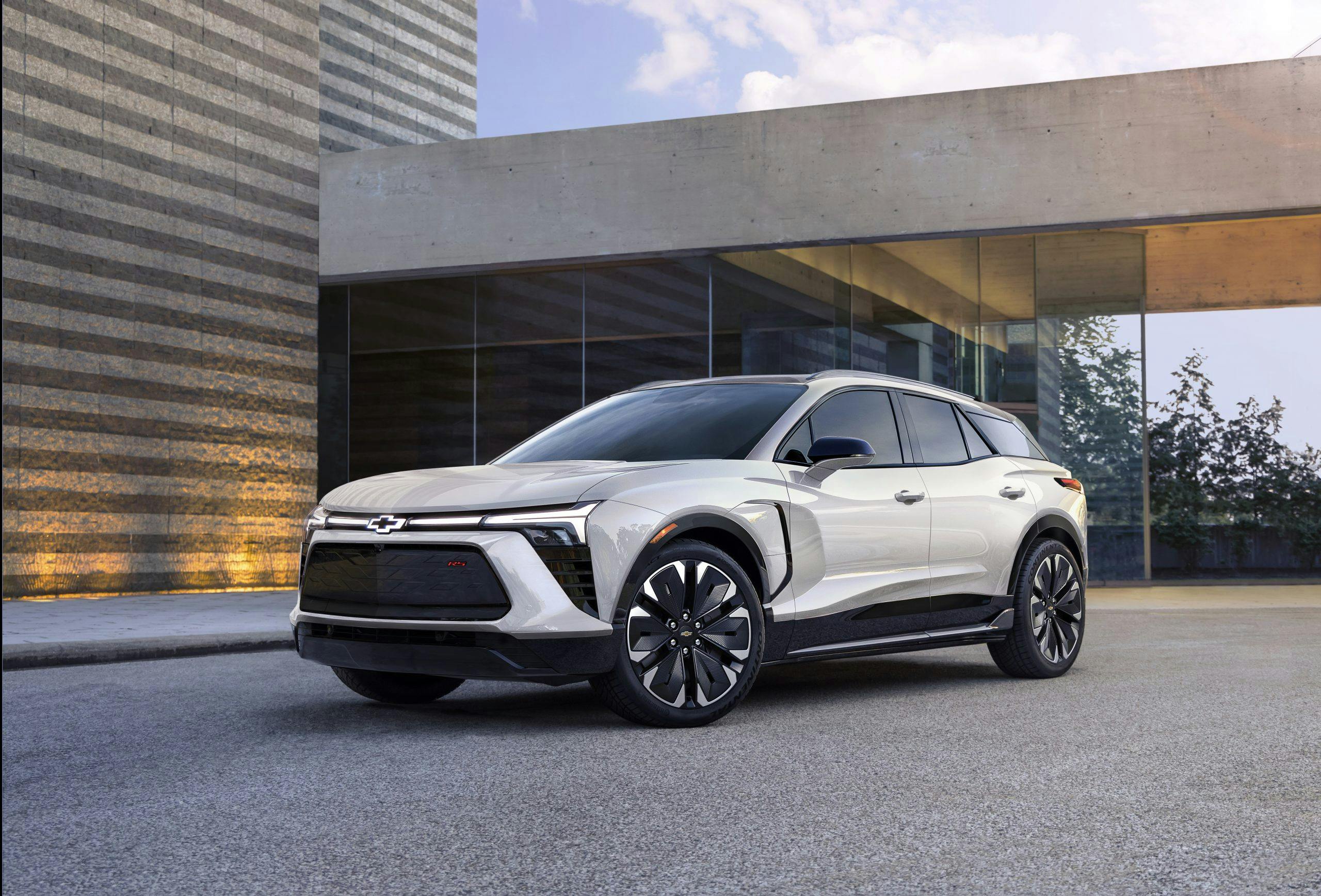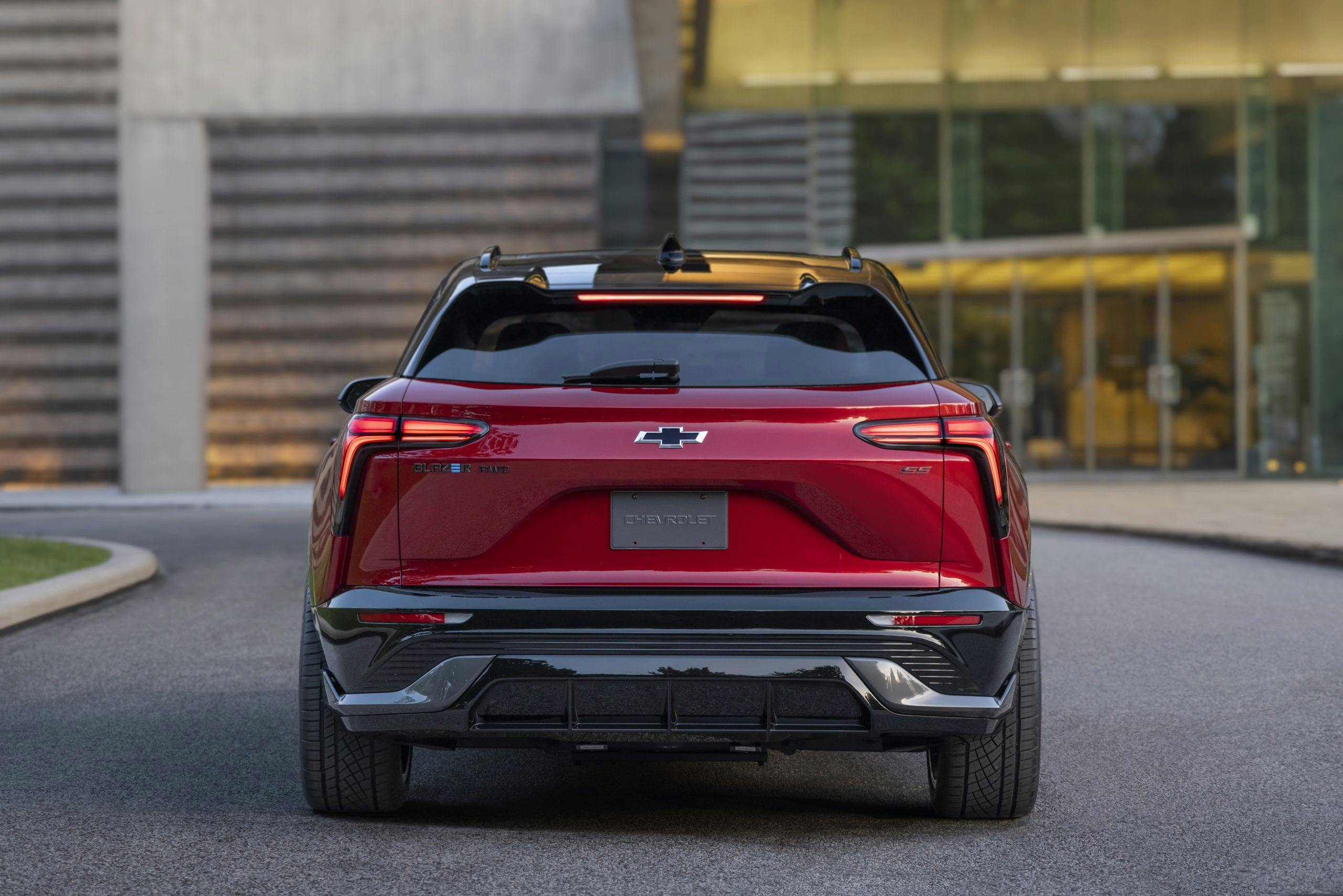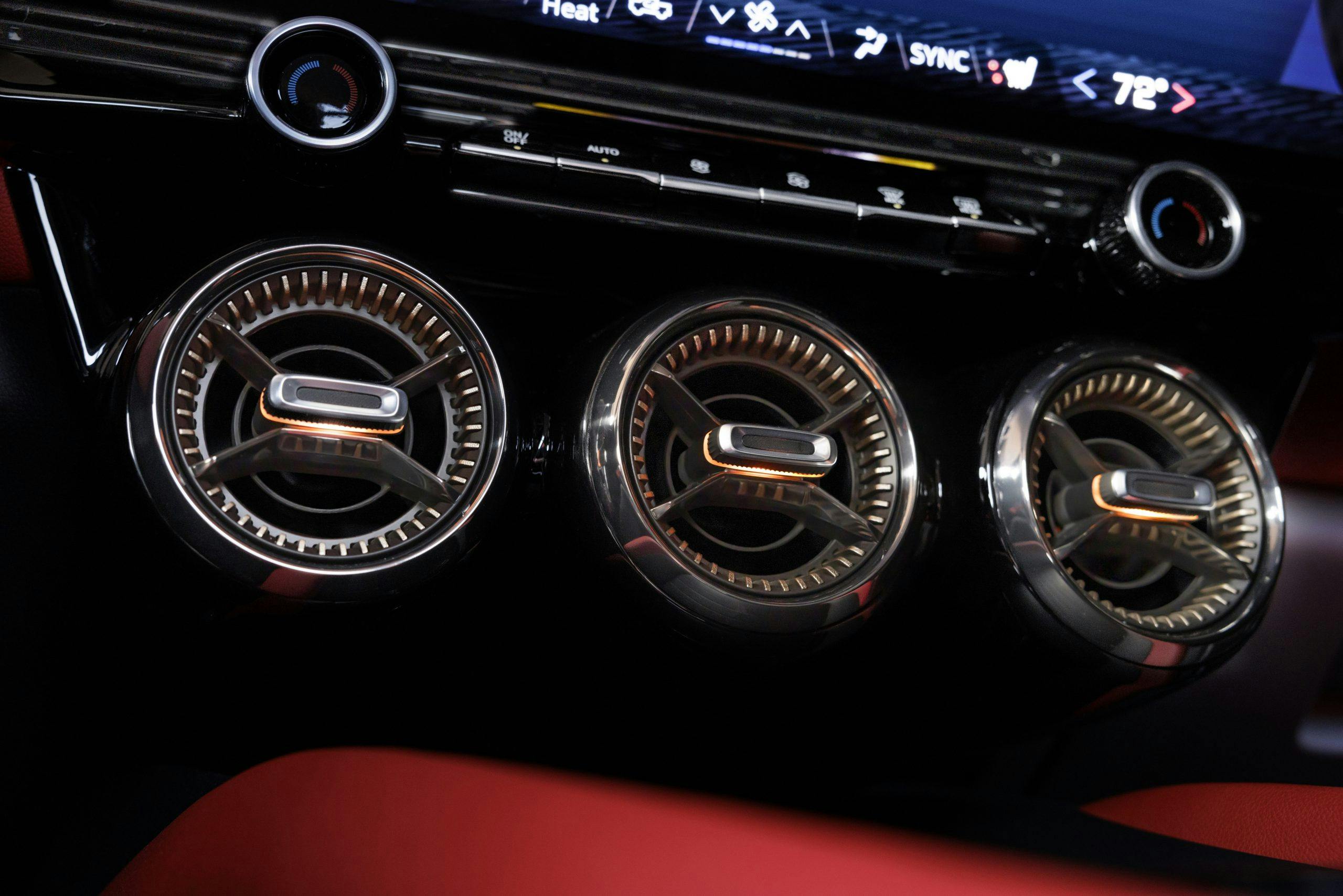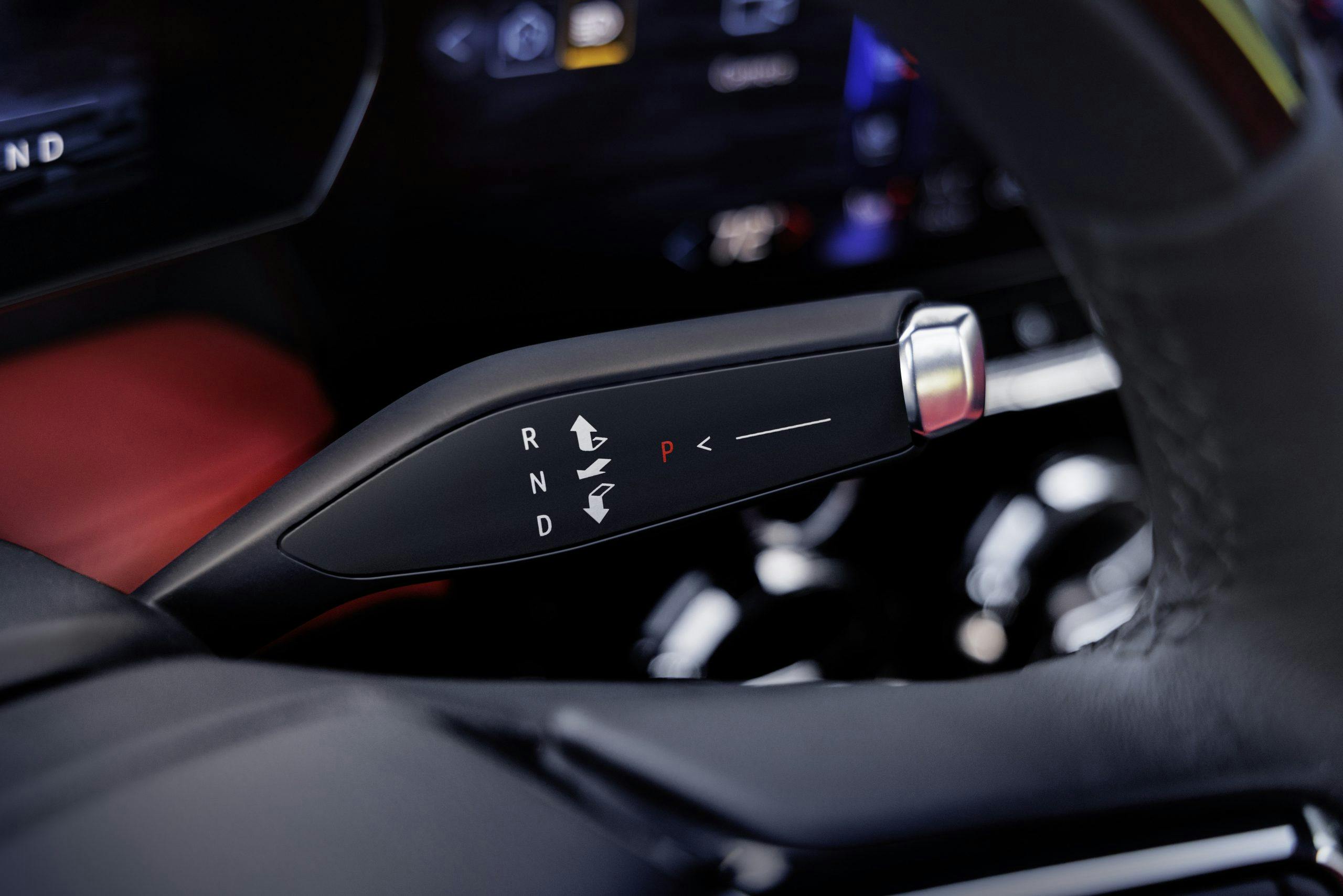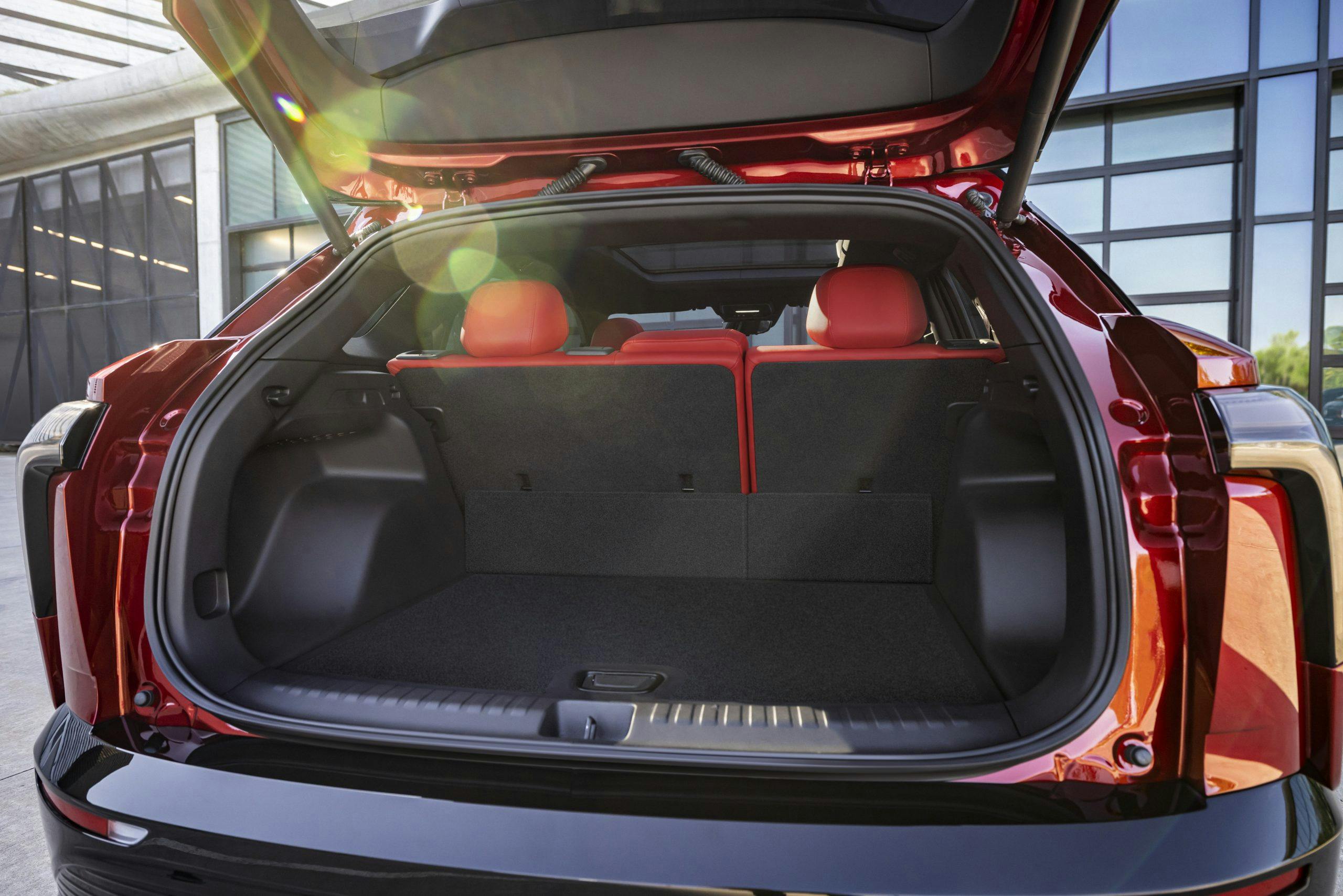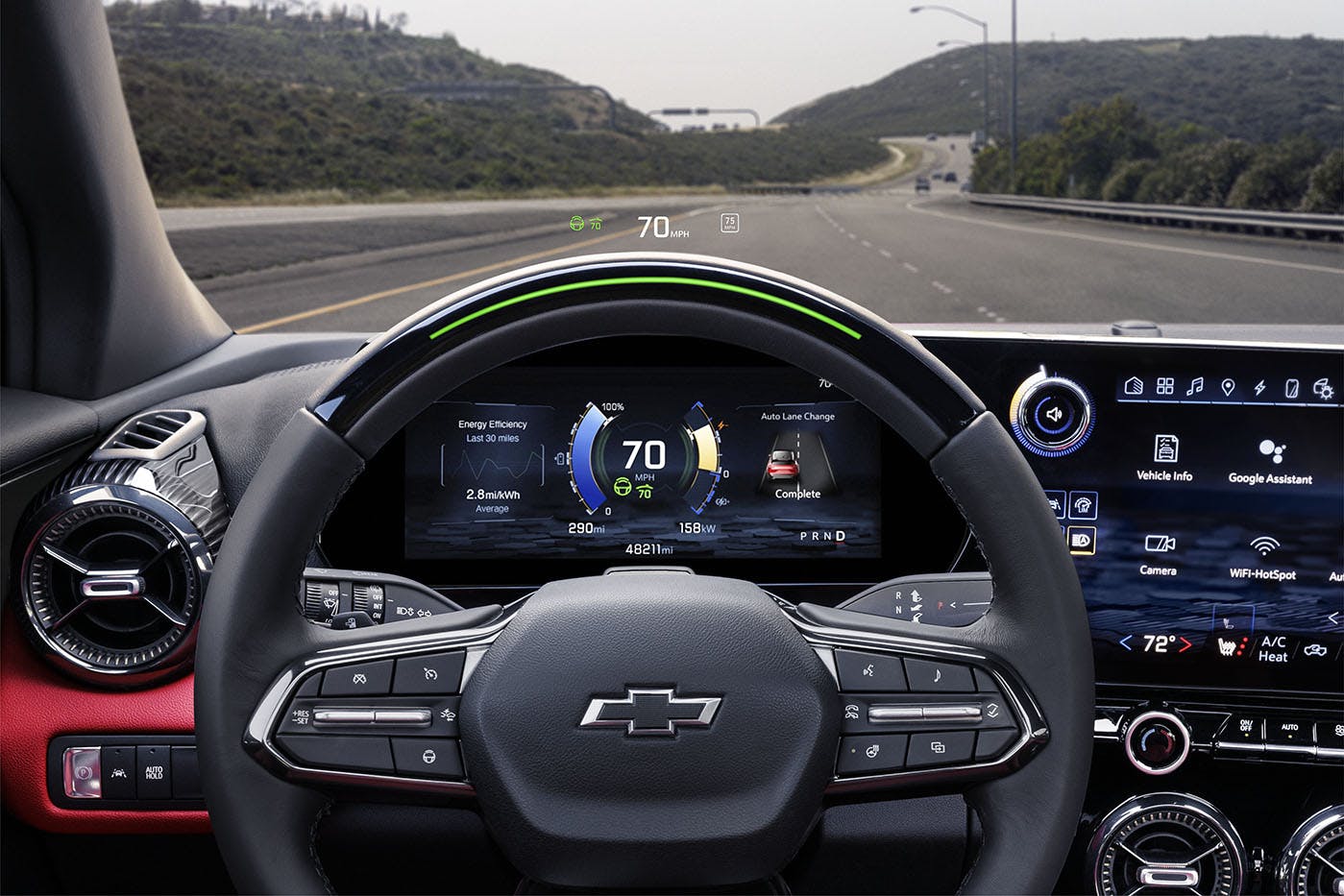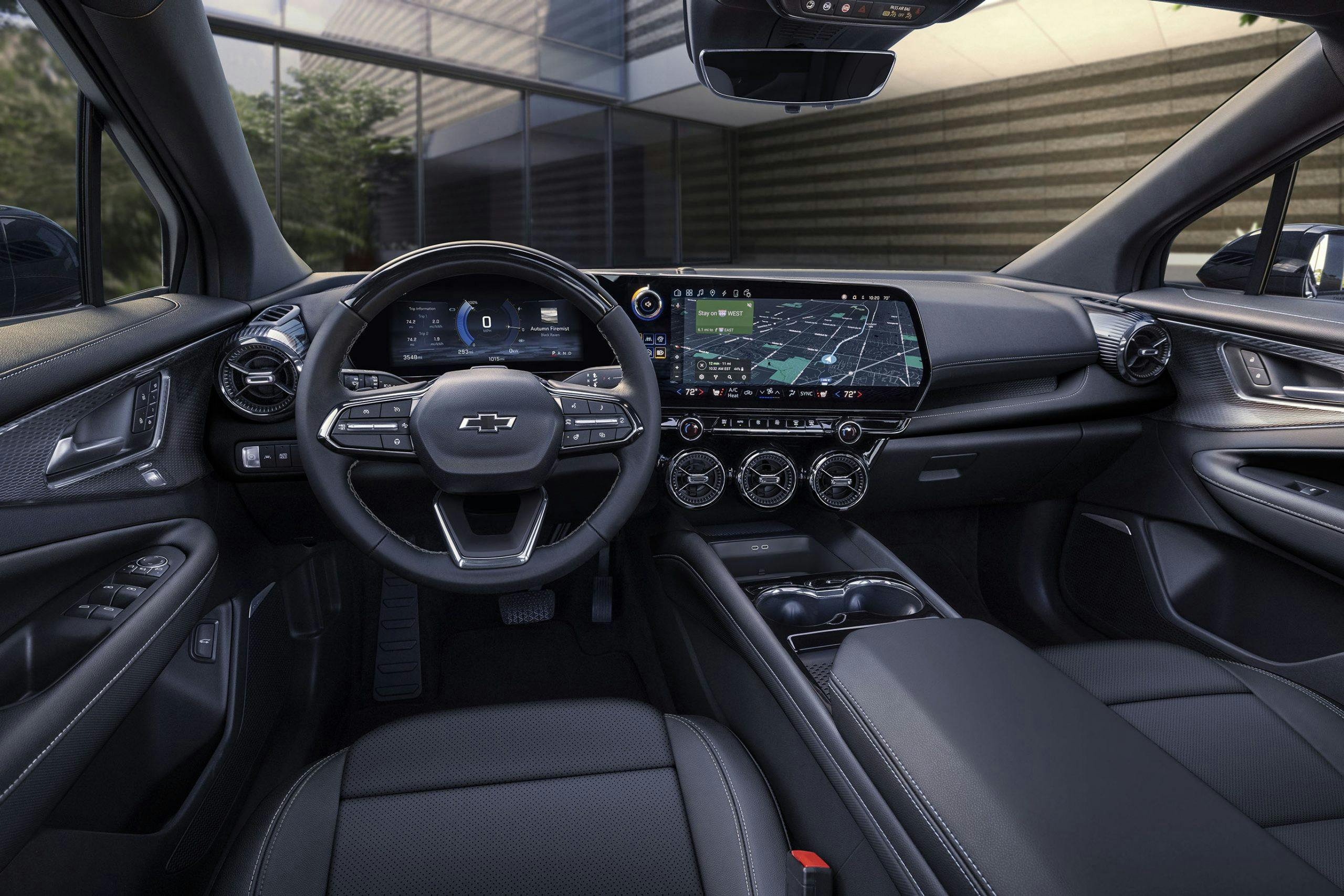Chevrolet’s 557-hp Blazer EV wants to crash the Mach-E GT’s party
Welcome to Chevrolet’s first generously sized electric SUV, the 2024 Blazer EV. Dwarfing its Bolt EUV sibling, and built upon the same modular “Ultium” architecture as the Silverado and Hummer EVs, this crossover takes the Bowtie to war against the Ford Mustang Mach-E and the Tesla Model Y. Two years late is better than never, right?
Chevy obviously wants to focus on the highest-performing trim—the $66K, 557-hp, Super Cruise–equipped SS—but those who can’t afford or simply don’t need that kind of performance have several options, all wrapped in handsome (if derivative) sheetmetal and festooned with giant touchscreen. The most affordable is the 1LT, a front-driver with 247 miles of range and a price tag of roughly $45K. (Chevrolet’s truly budget offering, the $30K Equinox EV, has yet to arrive.)
Though it looks like a combustion-powered Blazer that’s been stretched vertically and horizontally, the Blazer EV avoids looking like a pillbug (see: the Ford) or cough drop on stilts (Tesla). Its biggest success is that it looks like a modern-day Chevy—nothing like a ’70s or ’80s Blazer, and absolutely unlike anything to wear the SS badge, but enough like other contemporary Bowtie crossovers to inspire some brand loyalty among those who don’t care about the name-swapping. You’ll be able to tell different Blazer trims from each other by the color of their “grilles”: The LT models each have a body-colored panel below their squinty LED headlights. The same bit is blacked out on the RS (the third of the four trims), which tops it with even more LEDs. The SS wears a different lower front fascia, into which designers have worked fins and strakes and kinks.
The cabin of each Blazer EV, from 1LT to SS, is dominated by a 17.7-inch main touchscreen flanked by an 11-inch digital instrument cluster. While this horizontal orientation loses the iPad overtones of the Tesla’s or the Ford’s interior displays, it’s a bit more familiar, even leaving room for a few dials and buttons on the center console. Given the standardized screens, designers rely mostly on color and material to visually differentiate the trim levels: A few exception are the flat-bottom steering wheel and hands-free tailgate found on the RS and SS models. Other equipment varies with price point, of course; RS and SS get heated and ventilated seats. The latter gets GM’s hands-free driving tech (Super Cruise) as standard, while the former will offer it at a price.
The most important differences between the trims, of course, are found in power and range. Step up from the single-motor, FWD-only 1LT to the 2LT, a difference of $2600, and you get the option of all-wheel-drive and a range of 293 miles (vs. 247) for $47,595. For another $4400, the RS (FWD by default) offers the options of rear-wheel drive or AWD and up to 320 miles of range—the most generous in the lineup. Though it boasts 557 hp and 648 lb-ft of torque (the latter most likely available temporarily, in a boost-like function), the AWD-only, dual-motor SS maxes out at 290 miles of range. Your first choices will be the mid-range ones (2LT and RS), beginning this summer. The SS will be available to order “later in 2023,” and the base, 1LT not until the first quarter of 2024.
Thanks to Ford and the Mustang Mach-E, Chevrolet hasn’t broken new ground by designing an electric SUV that repurposes vaunted, all-American names and will be built in Mexico. (At least Ford isn’t building a pursuit-spec version for police fleets … wait.) However, if the Blazer EV proves as livable and approachable as the Mach-E, originality may matter little, if at all.
